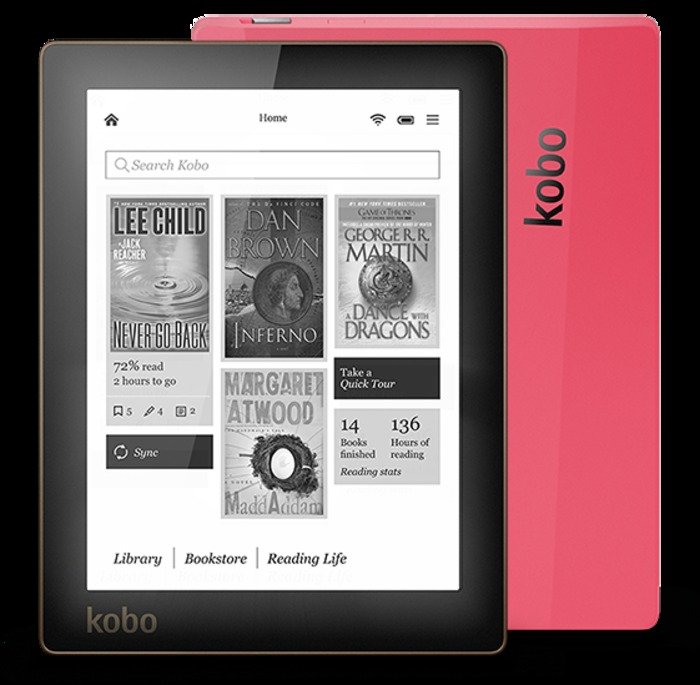Kobo Aura. Credit: Kobo
Users of e-readers can be excused for wondering if they haven't embraced a technology headed for the graveyard of products overtaken by something brighter and shinier -- in this case inexpensive tablet computers.
In less than 5 years e-readers like the Amazon Kindle, the Barnes & Noble Nook, the Sony Reader and others have gone from "must-have" status to "I don't need one, I have a tablet."
Sales are flat, and E Ink Holdings, manufacturer of the e-ink displays that make e-readers possible, recently reported sales and earning were down 46 percent from the previous year.
Part of the problem is that e-readers have always been a niche product, aimed at serious readers willing to pay $150 or so for a device that does just one thing -- provide an excellent reading experience.
Although tablet computers can provide a similar if slightly less precise experience, their initially higher prices made a dedicated e-reader with a 6-inch screen -- just about the size and heft of a paperback book -- a desirable purchase.
That all changed with the arrival of inexpensive 7-inch tablets.
A Kindle Fire for $159 or a Nexus 7 for $269, while perhaps not delivering the same level of reading experience, became an attractive alternative because they could do other things as well.
Therein lies the chief obstacle to e-readers' market health; an e-book user can read a book. Period. A tablet user can read a book, browse the Internet, send an email, watch a movie, play a computer game and eagerly await the release of the next "must-have" tablet app. Oh, and all that in color, too.
Sellers of e-readers have tried price cuts to compete; Barnes and Noble has dropped the price of its Nook Simple Touch with GlowLight to just $99, and Amazon is offering its front-lit Kindle Paperwhite for $139.
But they only have to look over their shoulders to see tablet computers following them down the price scale. One Chinese manufacturer, Ematic, is offering a 7-inch Android-powered tablet for just $79.99. It may cut some corners on speed and features, but it can still do all the things a tablet can do at a price below that of many dedicated e-readers.
Still, it's probable e-readers will not disappear any time soon, not with giants like Amazon, Sony and Barnes & Noble pushing them.
And there are several signs of that. Amazon's popular WiFi-enabled Kindle Paperwhite is reportedly out of stock, with analysts saying that's strong evidence the online giant is preparing to announce a new model this fall.
And one smaller player in the e-reader arena -- Canada's Kobo -- has decided to buck the trend and last week unveiled its premium Kobo Aura reader, hoping its high-resolution screen -- 212 dpi and 16 levels of gray -- and state-of-the-art edge lighting can attract customers willing to pay a premium $149.
Kobo founder Mike Serbinis said he was confident in the future of e-readers, noting 29 percent of the U.S. book market is now digital.
"The majority of this action has been based on mostly books, mostly black and white, and mostly adults," Serbinis said. "We're focused on the reader ... and we stand for them."
Still, all e-readers face an uphill battle to win the hearts of consumers who are likely remain convinced carrying one device that does a lot of things makes more sense than carrying two -- one that does a lot of things and another one just to do one of those things slightly better.















